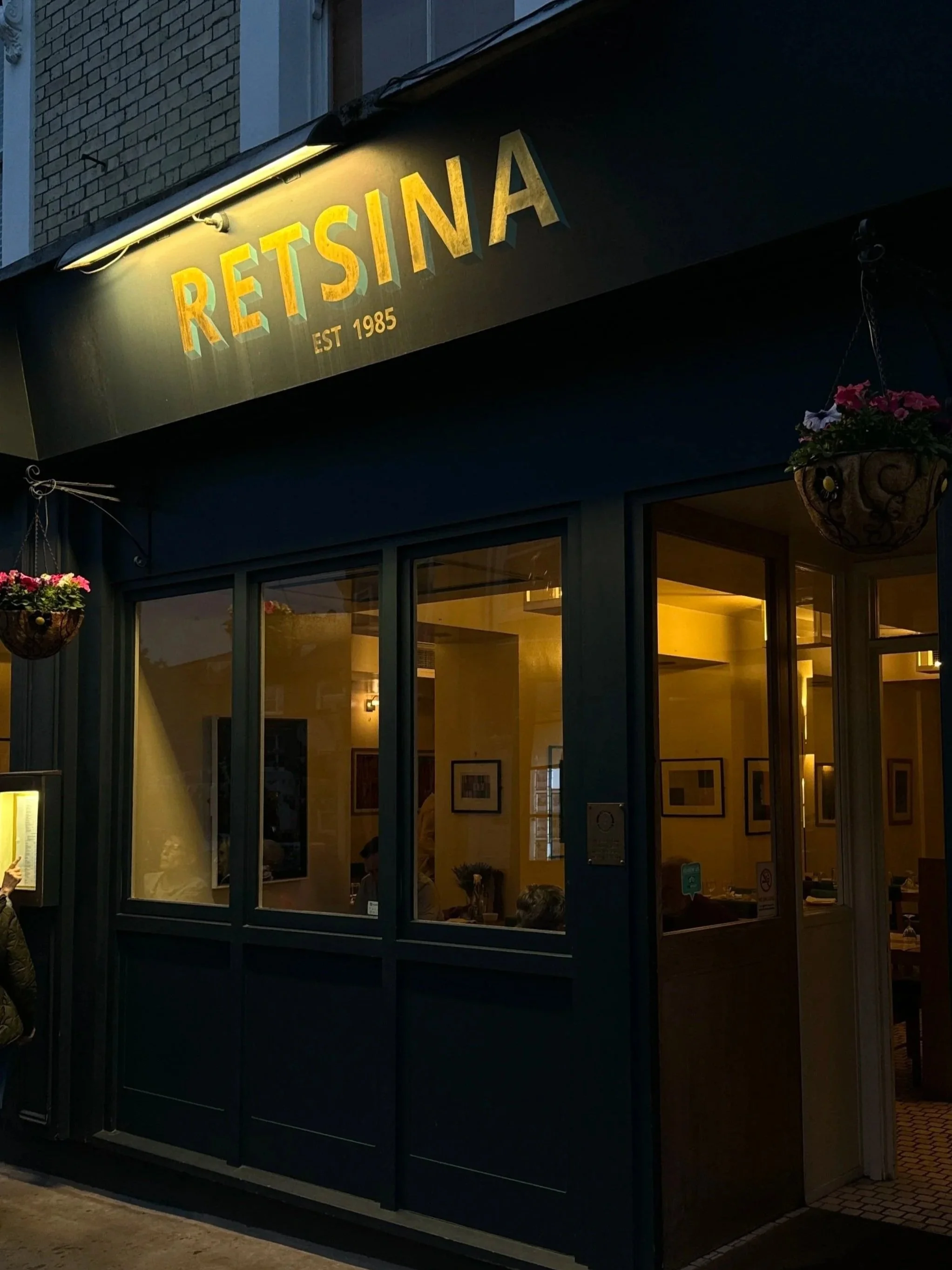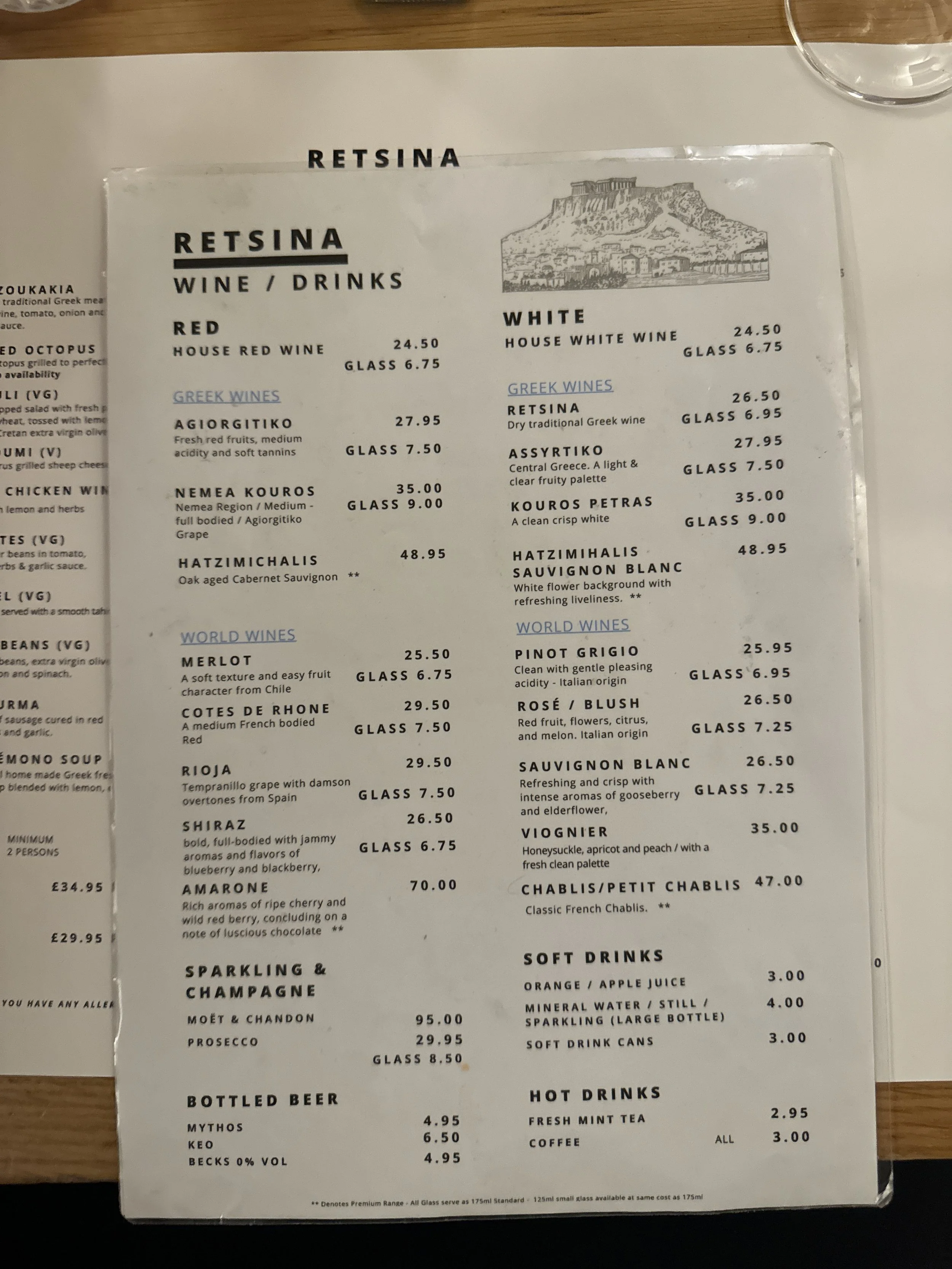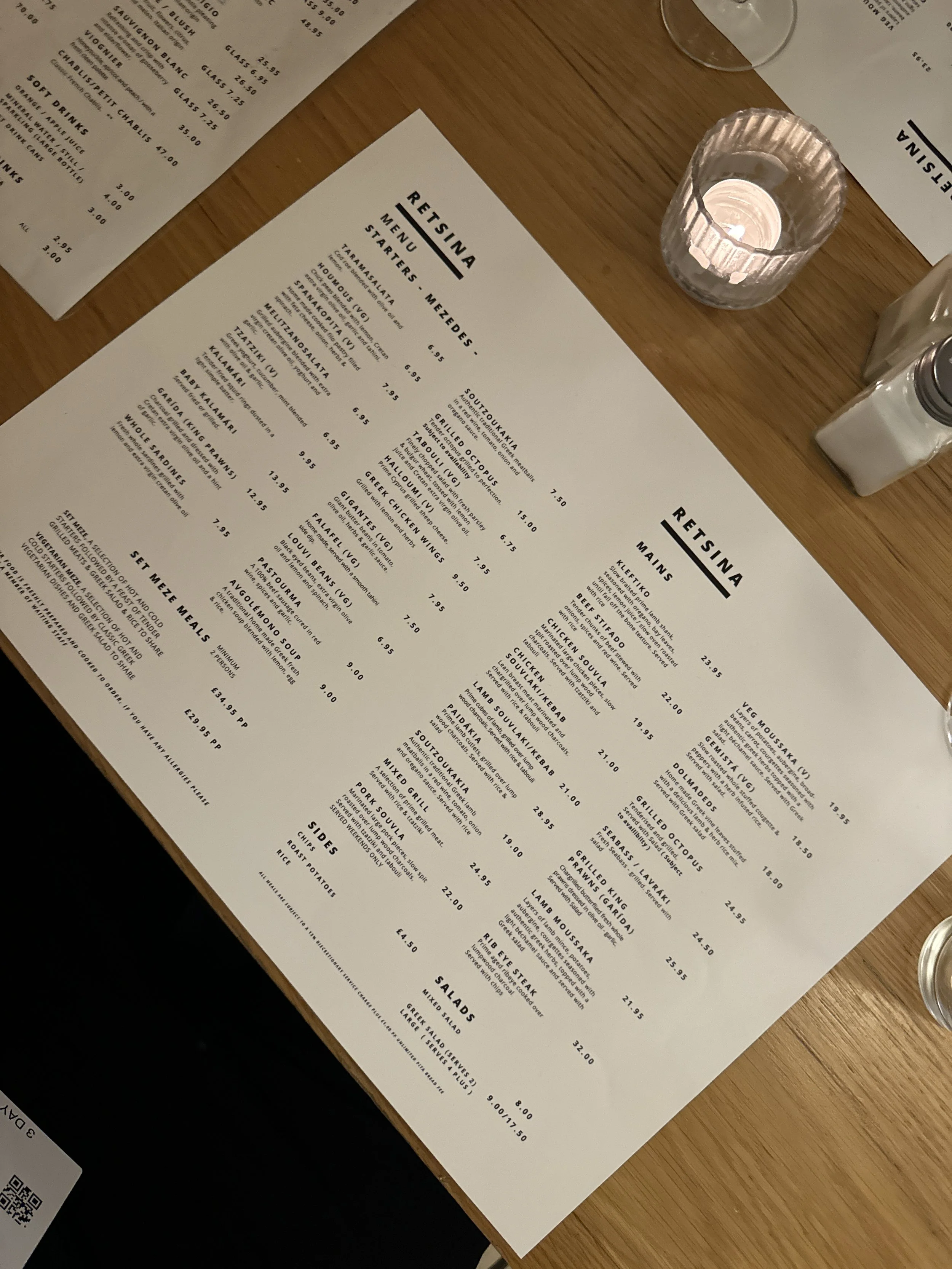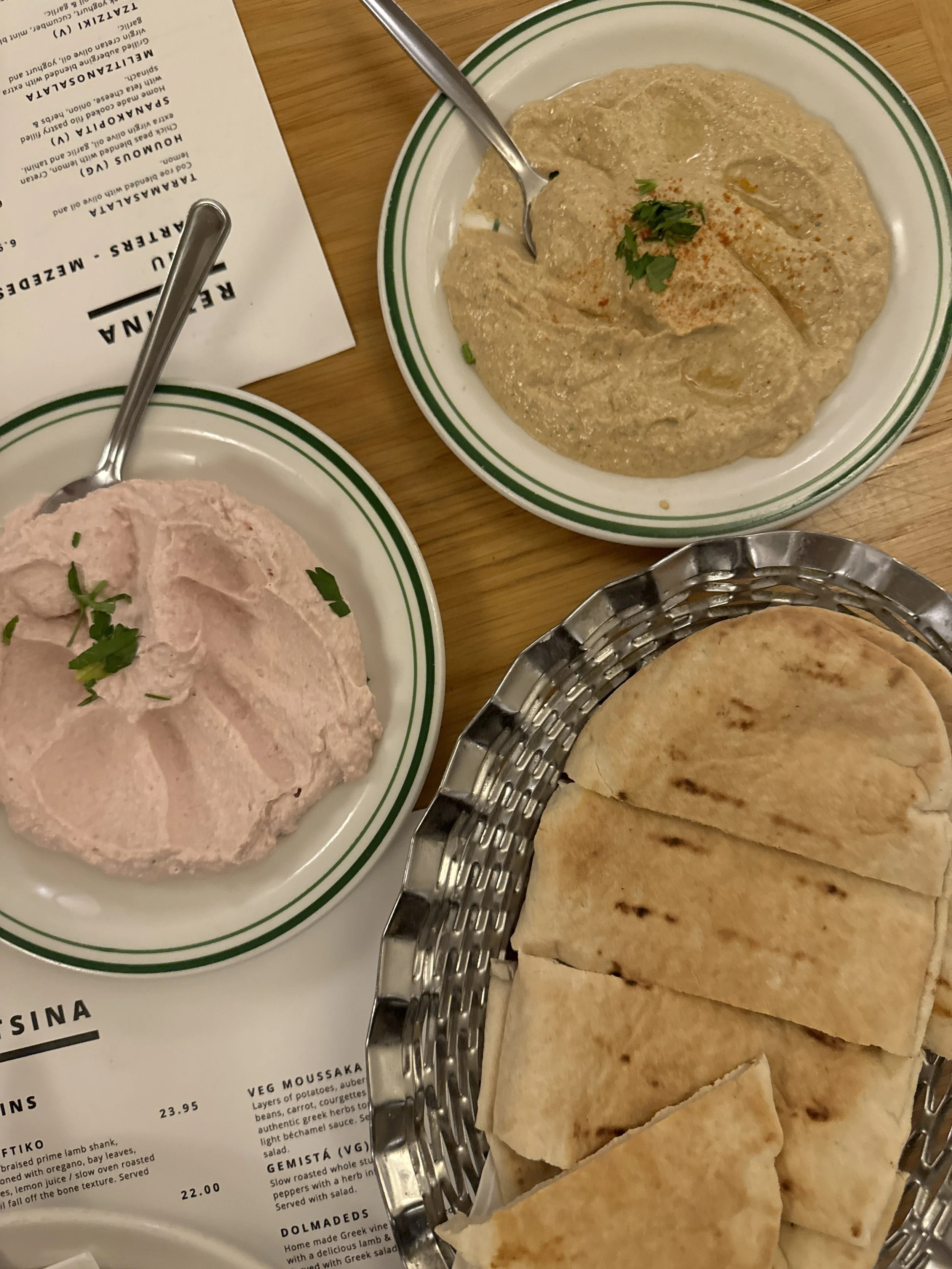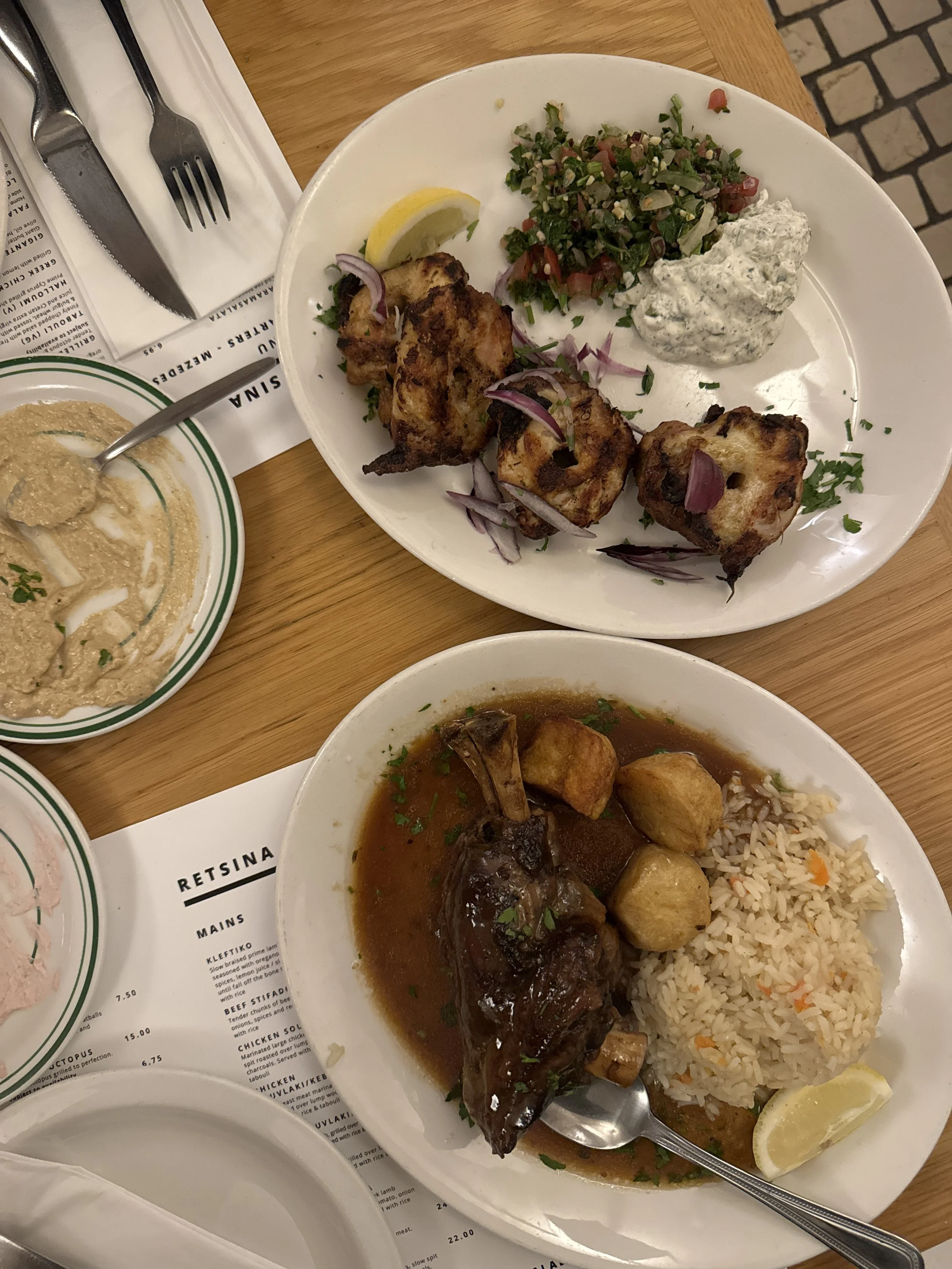Retsina, Belsize Park. Like a fine wine
Είναι αδέλφια δίδυμα η Κύπρος με την Κρήτη
Η μια ᾽χει Πενταχάχτυλο κι η άλλη Ψηλορείτη
MANTINADES & TSIATTISTA
The Cretans have a mantinada that summarises their island’s affinity with Cyprus. Both islands are primarily Greek-speaking, but with a distinct, heavy dialect and a rich cultural lineage rooted in prehistory that incorporates a broad wealth of influences, all of which embolden a strong sense of identity and pride. The mantinada imagines the two islands as siblings, each with their own mountain: Cyprus with Pentadachtylos, Crete with Psiloriti. Just as Crete has mantinades, Cyprus has tsiattista. Poems, usually of 15 syllables, usually accompanied by music.
I’m looking at a menu that hints at Greek and Cypriot origins in a quaint and endearing candle-lit taverna in Belsize Park, London, e.g. one which rhymes Smyrneika soutzoukakia with Cypriot pastourma. Ζαμπία – otherwise known as Zeta – came to London from Crete for a few days in 1967, but never left. The reason is that she met her Cypriot husband in a coffee shop here. And that’s the short story of how ‘Retsina’ came to be.
You should never ask a woman her age, nor assume, but Zeta looks like she must be in her 60s. White hair, gentle wrinkles, but sharp, strikingly beautiful eyes and a raw, sincere smile that lights up the room.
She tells the story of how she and her husband would visit Crete every year until her parents passed. After that? Things change, the place changes, and you begin to feel like a stranger there. She tells the story of how she found home in London instead, having lived a fairytale love story. Or, as she maintains, one that’s “beautiful, unpleasant and difficult, altogether.”
Zeta says that things happen as they happen, and that her life simply worked out that way – for better or worse.
From Preknadi to Retsina
Nor did I plan to go to Retsina at 9pm on a Tuesday night in May, but here the journey is at least half of the story. One which leads us to an unplanned, last-minute destination following a visit to the London Wine Fair. From speaking to independent Greek wineries and trying almost-unheard-of Greek grape varieties like preknadi (which only three wine producers cultivate in Greece for those interested), to drinking one of the most maligned of Greek wines at an homonymous taverna.
Retsina, given its ubiquitousness in the past, came to be associated with bad wine, poorly made, served out of the barrel and into any old glass. Χύμα in the taverna, which was the first point of contact and poor first impression that tourists would encounter in a country that otherwise wowed them. Greece had great grapes, and a long history of wine making (retsina itself can be traced back to 2,700 BC Crete)*, but it wasn’t until some studious winemakers worked together, applying techniques and best-practices in the 20th Century that Greek wine really embarked on its ascent. Iconic figures like Giannis Boutaris were at the forefront.
*Greek speakers interested in the wine conversation – check out this podcast about retsina.
The democratic nature of vineyard ownership (and of agriculture in general) in Greece means that lots of people grow grapes and make their own wine, which is how you get the ‘taverna types’ that some oenophiles might look down upon. At the same time, winemakers are working closer with one another and deepening relationships abroad while improving their product. Retsina – the wine – is benefiting from that revolution as winemakers are increasingly debunking the myth that retsina is, by default, bad. Just as well, given that retsina commonly comes from the Savvatiano grape, the most prevalent variety in Attica.
I think that sums up Retsina in Belsize Park pretty well. With its dim lighting, wooden tables and retro chairs, there is a hint of longevity that also warns of the risk of outdatedness.
I order the retsina. Compared to the wines we tried at the wine fair, as well as a quick wine from the tap at a pub on the road, this is not the best wine of the evening. While the old preconception of bad retsina still holds true here, the homonymous taverna certainly represents something that Londoners will come to appreciate more and more: a sincere, dependable, and intimate family-run taverna with longevity that survives in a calm, leafy neighbourhood – with good, homely food. As chains begin to dominate the hospitality industry, and mass-produced factory products the food and drink industry, it’s increasingly going to be the dodgy ‘taverna types’ that our nostalgia will guide us back to. Whatever what the critics and snobbier sommeliers might say.
A ‘smart’ but homely Greek/Cypriot taverna
There’s also something a bit more sophisticated about Retsina than the busy Greek/Cypriot spots in Camden and the community bastions in North London and Hertfordshire. The menu, despite the odd typo (e.g. ‘dolmadeds’) has a stylishly simplistic look. There is a consistency and a minimalism that is decorated with some light touches: modern art hangs off the walls, and an inoffensive shade of green fabric cushions the chairs. It feels clean. Well-dressed, suited, spectacled regulars bring an aura of quiet confidence that fills the room with a modest ‘Mediterranean’ buzz. It’s somewhere between a Russel Group university society event held in the library after hours and your typical Greek taverna.
Lemonia might be a close comparison, in a similarly leafy, affluent Primrose Hill, except Retsina feels much more homely and sincere. It’s home cooked food, in a family-run setting. Without the inconsistencies (the typos on the menu, the friendly waiter with the startled gaze, the charcoal shortage that rules out some items on the menu) it would feel incomplete. All add to the charm without offending. It feels human; you feel at home. Something that’s consistent with the food.
Even better when it’s homemade. Retsina keeps the simple yet dying art of making pastries alive. None of the frozen, factory-made shortcuts that are conquering London’s Greek restaurant and Greek bakery scene alike. Instead, delicious, flakey, crispy handmade spanakopitakia (spinach pies) that taste like home. A spoon glides through the kleftiko (slow-cooked lamb shank), which sits in a delicious, glossy sauce, and, although it’s true about the charcoal running out, we just about catch some of the chicken souvla that had already completed its shift over the coals. Surprisingly, not dry, which is a common risk when ordering a chicken that has been spinning on the skewer until the end of service.
The same is true of the dips. If the fact that we are there unplanned at 9.30pm on a weeknight isn’t excuse enough to bring out dry, bottom-of-barrel, standardised, bulk-produced stuff, then I trust Retsina more than most tavernas around Camden. Its menu represents Greece and Cyprus well, albeit with a couple London-Cypriot twists: like pairing souvla with tabouleh (also seen at Halepi), like adopting houmous and falafel into Greek and Cypriot cuisine.
If one thing is missing, it’s perhaps some more inspiration from Zeta’s Cretan roots. And some good retsina too.
📍 Retsina, 48-50 Belsize Ln, Belsize Park, London NW3 5AR.
For another independent, Greek-owned restaurant that showcases Cretan classics in somewhat of a more modern setting in the heart of central London, check out what we thought of 1905.
We don’t send a lot of emails but if you want to make sure you don’t miss out on anything major, add your email below, and make sure you’re following @souvlakination_ on Instagram.


